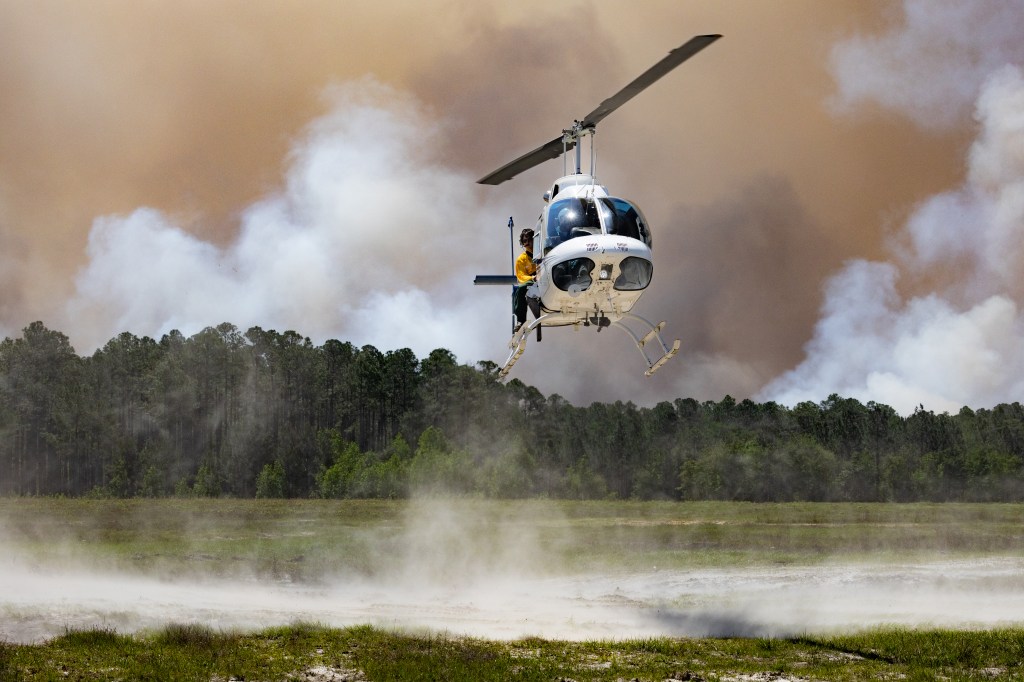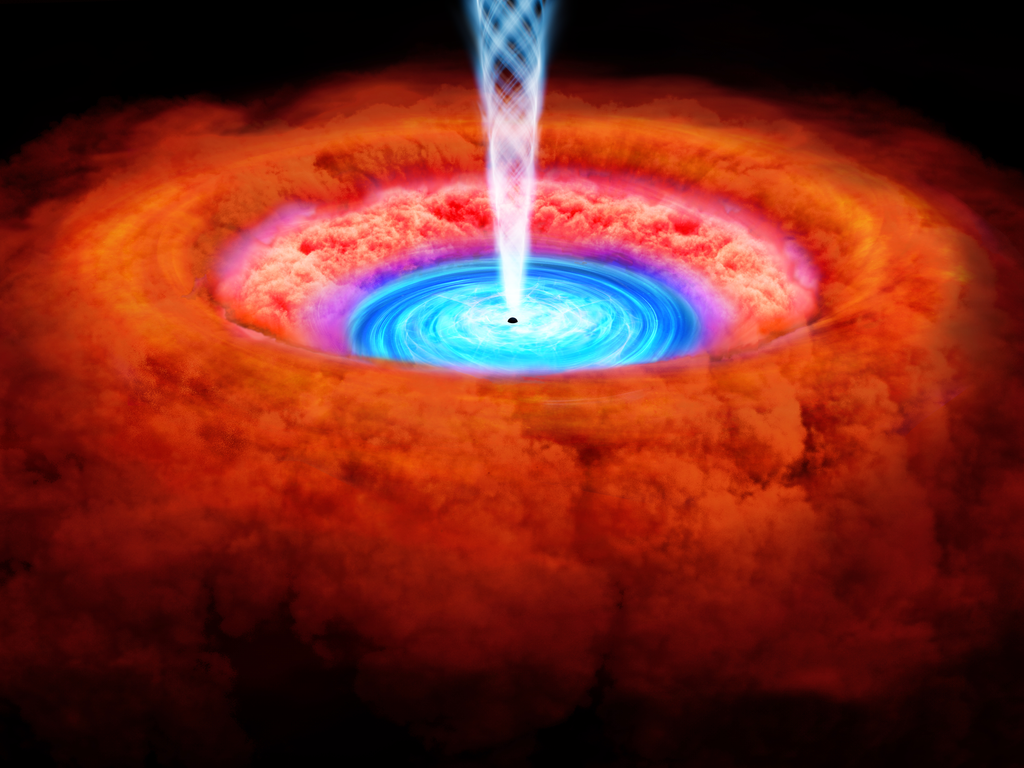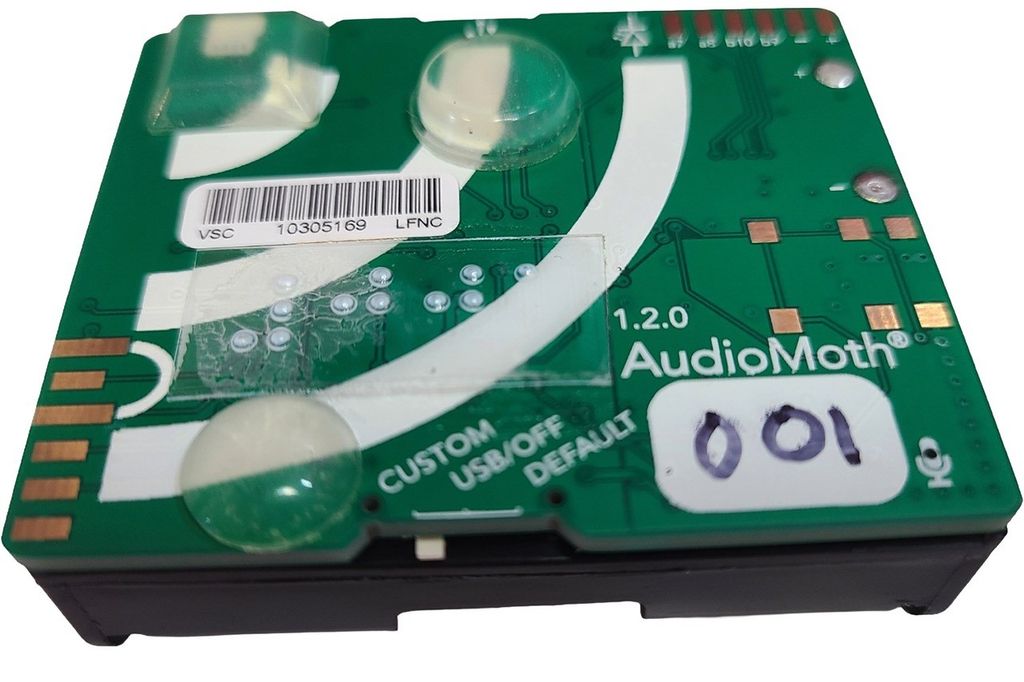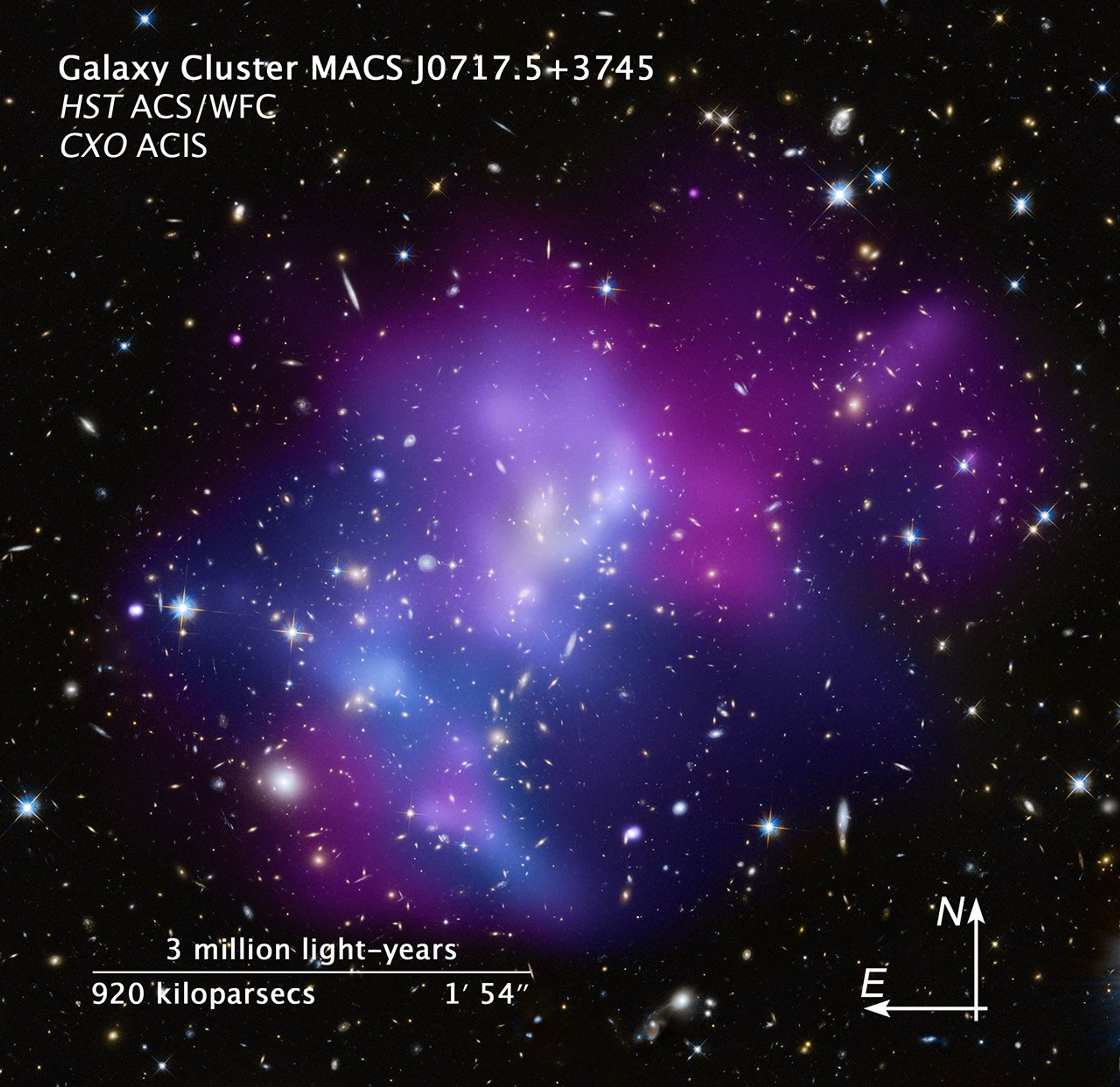1 min read
Galaxy Cluster MACS J0717

This composite image shows the massive galaxy cluster MACS J0717.5+3745 (MACS J0717, for short), where four separate galaxy clusters have been involved in a collision – the first time such a phenomenon has been documented. Hot gas is shown in an image from NASA's Chandra X-ray Observatory, and galaxies are shown in an optical image from NASA's Hubble Space Telescope. The hot gas is color-coded to show temperature, where the coolest gas is reddish purple, the hottest gas is blue, and the temperatures in between are purple.
The repeated collisions in MACS J0717 are caused by a 13-million-light-year-long stream of galaxies, gas, and dark matter – known as a filament – pouring into a region already full of matter. A collision between the gas in two or more clusters causes the hot gas to slow down. However, the massive and compact galaxies do not slow down as much as the gas does, and so move ahead of it. Therefore, the speed and direction of each cluster's motion – perpendicular to the line of sight – can be estimated by studying the offset between the average position of the galaxies and the peak in the hot gas.
MACS J0717 is located about 5.4 billion light-years from Earth. It is one of the most complex galaxy clusters ever seen. Other well-known clusters, like the Bullet Cluster and MACS J0025.4-1222, involve the collision of only two galaxy clusters and show much simpler geometry.
About the Object
- R.A. PositionR.A. PositionRight ascension – analogous to longitude – is one component of an object's position.07h 17m 33.79s
- Dec. PositionDec. PositionDeclination – analogous to latitude – is one component of an object's position.37° 45' 20.01"
- ConstellationConstellationOne of 88 recognized regions of the celestial sphere in which the object appears.Auriga
- DistanceDistanceThe physical distance from Earth to the astronomical object. Distances within our solar system are usually measured in Astronomical Units (AU). Distances between stars are usually measured in light-years. Interstellar distances can also be measured in parsecs.5.4 billion light-years or 1.7 billion parsecs
- DimensionsDimensionsThe physical size of the object or the apparent angle it subtends on the sky.The image is roughly 4.5 arcminutes (7.7 million light-years or 2.4 megaparsecs) wide.
About the Data
- Data DescriptionData DescriptionProposal: A description of the observations, their scientific justification, and the links to the data available in the science archive.
Science Team: The astronomers who planned the observations and analyzed the data. "PI" refers to the Principal Investigator.Chandra Data: Chandra data used were from proposal 4200. Hubble Data: The Hubble images were created from HST data from proposal 10420: PI: Dr. H. Ebeling (University of Hawaii), I. Smail (University of Durham, UK), J.-P. Kneib (Laboratoire d'Astrophysique de Marseille, France), G. Smith (University of Birmingham, UK), and D. Donovan and E. Barrett (University of Hawaii). - InstrumentInstrumentThe science instrument used to produce the data.CXO>ACIS and HST>ACS/WFC
- Exposure DatesExposure DatesThe date(s) that the telescope made its observations and the total exposure time.January 10, 2003 (CXO) and January 24, 2005 - February 9, 2005 (HST)
- FiltersFiltersThe camera filters that were used in the science observations.ACS: F606W (V) and F814W (I) ACIS Energies: 5 - 25 T(keV)
- Object NameObject NameA name or catalog number that astronomers use to identify an astronomical object.MACS J0717.5+3745
- Object DescriptionObject DescriptionThe type of astronomical object.Cluster of Galaxies
- Release DateApril 16, 2009
- Science ReleaseGalaxy Cluster MACS J0717
- Credit

The image is a composite of separate exposures made by the ACS instrument on the Hubble Space Telescope and the ACIS instrument onboard the Chandra X-ray Observatory. Two filters were used to sample broad wavelength ranges. A continuous energy band was used to sample the X-ray data. The color results from assigning different hues (colors) to each monochromatic image. In this case, the assigned colors are: Cyan: F606W (V) Yellow: F814W (I) Blue - Violet (temperature map): 5 - 25 T(keV)

Share
Details
Claire Andreoli
NASA’s Goddard Space Flight Center
Greenbelt, Maryland
claire.andreoli@nasa.gov



























